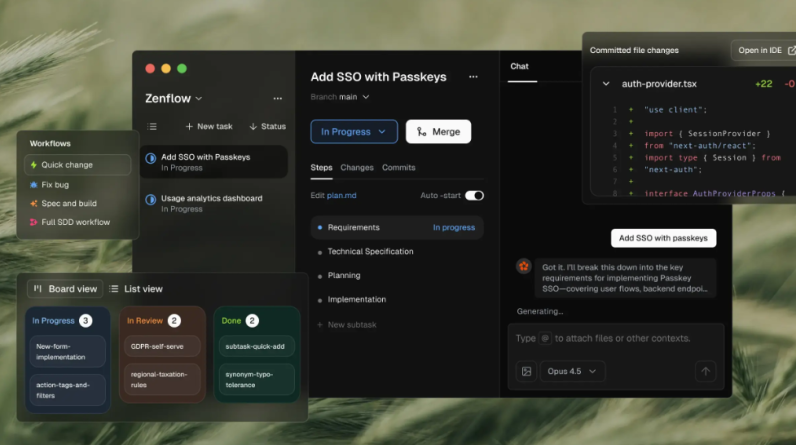
In today’s fast-paced business environment, maximizing efficiency and minimizing errors are crucial for maintaining a competitive edge. Workflow automation has emerged as a transformative tool for achieving these goals, significantly enhancing employee performance and operational outcomes. By streamlining repetitive tasks and standardizing processes, automation allows employees to focus on more strategic activities, leading to improved productivity and reduced error rates. This article explores how workflow automation can revolutionize workplace efficiency and performance.
Streamlining Repetitive Tasks
One of the most significant benefits of workflow automation is its ability to streamline repetitive and time-consuming tasks. In many organizations, employees spend a substantial portion of their day on routine activities such as data entry, report generation, and email management. These tasks, while necessary, are often prone to human error and can lead to inefficiencies. Workflow automation systems address this issue by automating these processes, reducing the need for manual intervention. For example, an automated system can handle data entry across multiple platforms, ensuring consistency and accuracy while freeing employees to concentrate on higher-value tasks. This shift not only enhances overall efficiency but also boosts employee morale, as staff members can focus on more engaging and impactful work rather than mundane tasks.
Reducing Error Rates Through Standardization
Workflow automation significantly reduces error rates by standardizing processes and minimizing human intervention. Manual processes are inherently prone to mistakes, whether due to fatigue, oversight, or simple errors. Automation systems, on the other hand, follow predefined rules and protocols, ensuring that tasks are completed accurately and consistently. For instance, in financial departments, automated systems can handle complex calculations and data reconciliation with a high degree of precision, reducing the likelihood of errors that could lead to costly discrepancies. This standardization not only enhances accuracy but also improves compliance with regulatory requirements, as automated systems can be programmed to adhere to specific guidelines and audit trails. As a result, businesses can achieve a higher level of reliability in their operations and minimize the risks associated with manual errors.
Enhancing Employee Performance and Satisfaction
The impact of workflow automation extends beyond operational efficiency and error reduction; it also significantly enhances employee performance and satisfaction. By automating routine tasks, employees are empowered to focus on more strategic and creative aspects of their roles. This shift can lead to increased job satisfaction, as employees feel more engaged and valued when they are involved in meaningful work. Additionally, automation tools often come with advanced analytics capabilities that provide employees with valuable insights into their performance and workflow efficiencies. This data can be used to identify areas for improvement, set performance benchmarks, and foster a culture of continuous improvement. Furthermore, as employees become more adept at leveraging automation technologies, they acquire new skills that can enhance their career prospects and contribute to personal growth.
Leveraging AI Workflow Automation for Advanced Efficiency
AI workflow automation represents the next frontier in enhancing workplace efficiency and accuracy. Unlike traditional automation systems, AI-driven solutions leverage advanced algorithms and machine learning to analyze patterns, predict outcomes, and make real-time adjustments to workflows. This technology not only automates routine tasks but also optimizes processes by continuously learning from data and user interactions. For instance, AI can identify inefficiencies or bottlenecks in a workflow and suggest improvements, enabling organizations to adapt quickly to changing conditions. By integrating AI workflow automation, businesses can achieve a higher level of precision and agility, further reducing errors and boosting overall performance. This cutting-edge approach ensures that organizations remain at the forefront of technological advancements, maximizing their operational potential and enhancing employee productivity.
Customizing Automation to Fit Unique Business Needs
One of the key advantages of workflow automation is its ability to be customized to meet the specific needs of different businesses. Unlike one-size-fits-all solutions, modern automation tools can be tailored to fit the unique processes and requirements of an organization. This customization allows businesses to design workflows that align closely with their operational goals and industry standards. For example, a company in the manufacturing sector might implement automation to streamline supply chain management, while a financial institution could focus on automating compliance reporting. By aligning automation with unique business needs, organizations can achieve more relevant and effective solutions, leading to greater overall efficiency and performance.
Facilitating Seamless Integration Across Systems
Another significant benefit of workflow automation is its ability to facilitate seamless integration across various systems and platforms. In many organizations, different departments use disparate systems for managing tasks, data, and communications. Workflow automation tools can bridge these gaps by integrating with existing software and databases, enabling smooth data transfer and process synchronization. This integration reduces the risk of data silos and ensures that information is consistently updated across all systems. For example, an automated system can synchronize customer data between a CRM and an email marketing platform, ensuring that campaigns are based on the most current information. By enabling seamless integration, automation helps maintain data integrity and enhances overall workflow coherence.
Facilitating Seamless Integration Across Systems
Empowering Remote and Hybrid Work Models
The rise of remote and hybrid work models has highlighted the importance of effective workflow automation in maintaining productivity and collaboration. Automation tools facilitate remote work by providing employees with the ability to access and manage workflows from anywhere, thus supporting flexible work arrangements. For instance, cloud-based automation solutions allow employees to collaborate on projects, track progress, and complete tasks regardless of their physical location. This capability not only helps maintain productivity but also ensures continuity in operations even when team members are dispersed. By supporting remote and hybrid work models, workflow automation contributes to a more adaptable and resilient workforce, enabling organizations to thrive in an increasingly dynamic work environment.
Workflow automation is a game-changer in the modern workplace, offering significant benefits in efficiency, accuracy, and employee satisfaction. By streamlining repetitive tasks, reducing error rates through standardization, and enhancing employee performance, automation tools drive operational excellence and foster a more engaged workforce. The integration of AI workflow automation and the ability to customize solutions further amplify these advantages, ensuring that businesses remain agile and competitive. As organizations continue to evolve and adapt to new work models, leveraging workflow automation will be essential for sustaining productivity and achieving long-term success.
Email your news TIPS to Editor@kahawatungu.com or WhatsApp +254707482874






